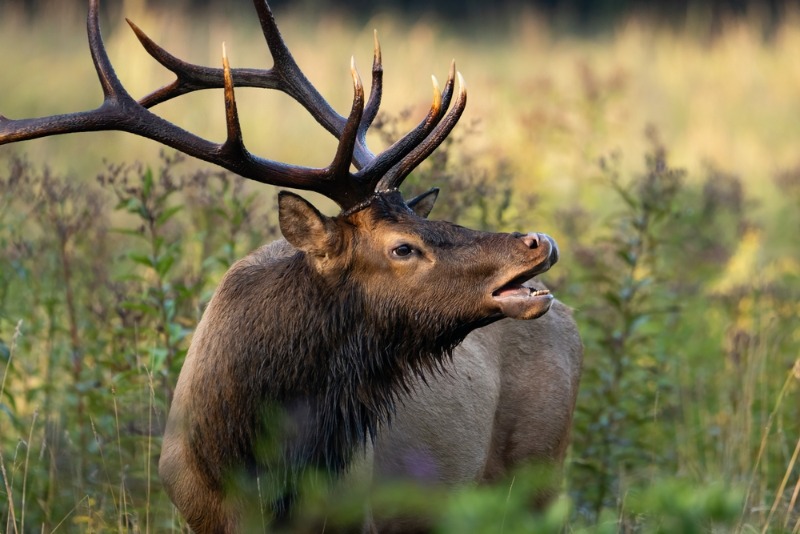 If you’ve ever spent time in elk country during the fall rut, chances are you’ve heard one of nature’s most thrilling sounds—a bull elk bugling. It’s an echo that fills the mountains and chills your spine in the best way. For those planning their first hunt or simply curious about the tradition, understanding the basics of elk bugling is a crucial and exciting step. At Rocky Mountain Elk Ranch, we often find that this vocal game of cat and mouse is what elevates a hunt from great to unforgettable.
If you’ve ever spent time in elk country during the fall rut, chances are you’ve heard one of nature’s most thrilling sounds—a bull elk bugling. It’s an echo that fills the mountains and chills your spine in the best way. For those planning their first hunt or simply curious about the tradition, understanding the basics of elk bugling is a crucial and exciting step. At Rocky Mountain Elk Ranch, we often find that this vocal game of cat and mouse is what elevates a hunt from great to unforgettable.
The surrounding terrain is rich with opportunity, not only for guided elk hunts but also for wildlife watching, photography, and enjoying the crisp mountain air. For anyone interested in connecting more deeply with the elk they pursue, learning to bugle isn’t just practical—it’s personal.
What Is Elk Bugling?
Elk bugling is the vocalization made by bull elk typically during the rut, or mating season. It’s a complex call that combines deep grunts, high-pitched squeals, and guttural growls. The bugle serves multiple purposes—challenging rival bulls, asserting dominance, and attracting cows. Each call can tell a different story, whether it’s a young bull testing the waters or a herd bull warning off competitors.
Why Bugling Matters to Hunters
Understanding elk bugling helps hunters interpret behavior and adapt their approach. Bulls communicate more than just location with their calls; tone and intensity can reveal mood, dominance, and proximity. For hunters, responding with the right bugle can lure a bull into view—or spark a dramatic encounter with a rival. Learning to distinguish between challenge bugles and locating calls can make all the difference.
The Basics of Bugling Techniques
To bugle like a pro, you’ll need the right gear and a little patience. Most hunters start with a diaphragm call and a tube, which mimics the resonant body of a bull’s throat. Start by mastering cow calls to build your breath control and tone accuracy. Then, move on to simple location bugles before attempting more aggressive challenge calls. Practicing in the off-season helps ensure you sound authentic when it matters most.
When and How to Use Bugles Effectively
Timing and strategy play a huge role in elk bugling success. Early morning and late evening are prime times for calling. Start with subtle location bugles to gauge nearby activity. If you get a response, escalate gradually—just like bulls do in the wild. Don’t overcall. Being too aggressive or too repetitive can make a bull wary of you. Think of it as a conversation, not a performance.
Common Mistakes to Avoid
New callers often make the mistake of calling too frequently or too loudly. Elk, especially pressured bulls, are quick to pick up on unnatural rhythms. Another mistake is failing to adjust calls based on terrain and wind. Sound travels differently in canyons versus open meadows, and bulls tend to circle downwind before closing in. Always anticipate and plan accordingly.
Practice Makes the Experience
We encourage guests to practice elk bugling in the field and with our experienced guides. There’s no substitute for learning with live feedback—both from elk and from someone who’s been doing it for years. Mastering the bugle adds a layer of immersion that turns a hunt into a true backcountry chess match.
Guaranteed Elk Hunting Guides and Outfitters in Idaho
Elk bugling is more than just a hunting tactic—it’s a gateway to understanding elk behavior and enhancing your time in the mountains. For first-time buglers, patience and practice will pay off. And for anyone joining us at Rocky Mountain Elk Ranch, there’s no better place to experience the thrill of elk bugling firsthand. Whether it’s your first call or your fiftieth, hearing a bull respond in the wild is a moment you’ll never forget.
